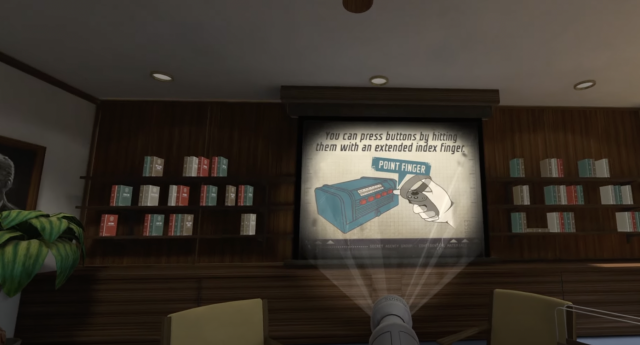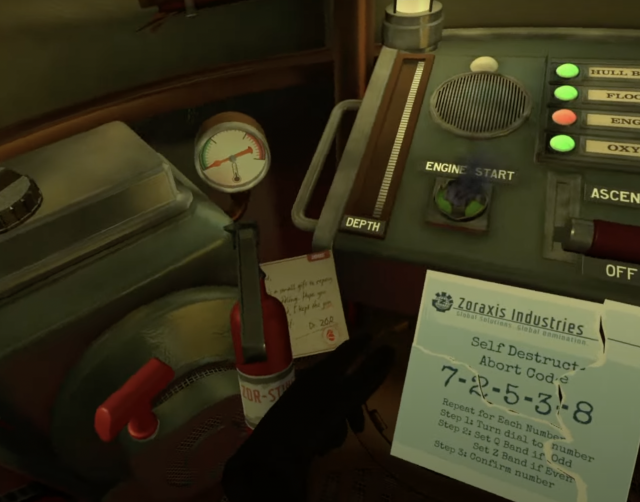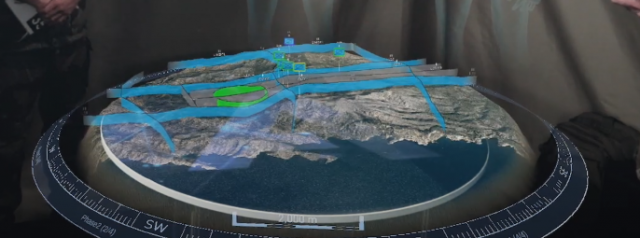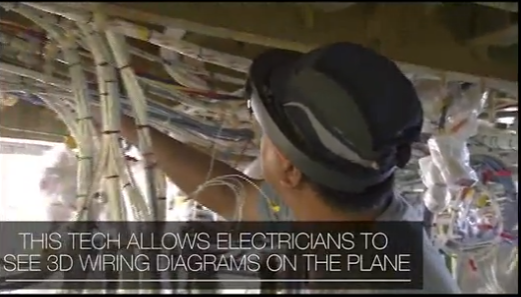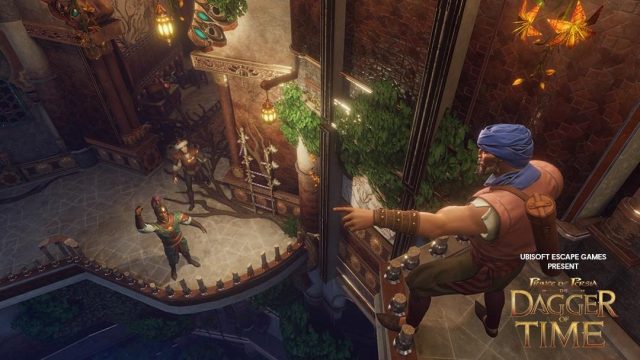What is VR?
Virtual Reality (VR) in gaming and entertainment: Virtual reality is a technology that allows users to immerse themselves in a computer-generated environment. VR is often used in gaming to provide a more realistic and immersive experience. In the following passage, I will share a successful VR game called Half-Life: Alyx to explain how it gives players an immersive experience.
What is Half-Life: Alyx?
Half-Life: Alyx is a first-person shooter video game developed and published by Valve Corporation. It is a prequel to the Half-Life series and takes place between the events of Half-Life and Half-Life 2. The game features a new protagonist, Alyx Vance, and utilizes virtual reality technology to immerse players in the game world. It was released in March 2020.
What features make it engaging?
Easy to get started
Whether you’re new to VR or not, Half-Life: Alyx is incredibly accessible, with four difficulty settings and three movement options, all of which can be swapped at any time. Even if you’re in full motion, clever use of the “jump” teleportation mechanism allows you to easily reposition settings without having to go back to the main menu.
It feels great to control Alyx in this game, thanks to the gravity glove, which helps to manipulate tools and items in the environment. If you see a large piece of resin (currency used for weapon upgrades), you can reach out and flick your wrist back. It will fly towards you, and then when it reaches you, you grab it. This never stops feeling satisfying, and combining it with other operations such as storing ammunition on my shoulder and managing more complex weapon reloading, feels immediately intuitive and easy to grasp. Finally, I used my hands independently like a pro, unless any enemy jumped on me, and my panicked movements made me pull the trigger on the empty gun and scramble back to find breathing space.
Playing in an immersive world
The desolate world of Half-Life has never been more vibrant. Whether you’re marveling at the disgustingly realistic guts on corpses in the sewers or counting the teeth on the ceiling barnacles waiting to suck passers-by, the gorgeous environment is immersive. I remember one time when I watched for almost a minute, a head crab crawled over a pile of luggage towards me, pulled down the bag, and fell on its back, unscripted to show off the game’s impressive physics. The intricate faces follow me through the conversation and the beautiful scenery takes my breath away.
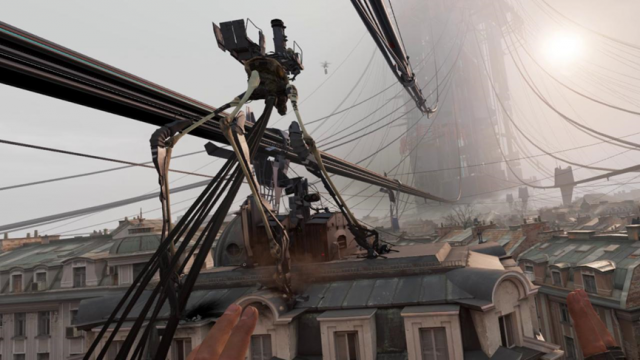
Combat isn’t a highlight, but it still creates exciting moments. You’ll find only three weapons, all of which can be equipped with game-changing upgrades like grenade launchers or laser sights. I learned to throw clever grenades, move carefully through the environment, and loot corpses in battle, which is enhanced by lifting the corpse with my hands to gain ammo and health hidden in my back pocket. It’s both satisfying and pathological. Shooting, reloading, and switching weapons all feel great in VR, thanks to responsive controls and cleverly designed guns that subtly highlight the desired action. For example, you forgot to pull back the red dark light on the pistol slide rails to help remove a lot of frustration about not knowing why your gun won’t fire. Ducking behind the cover feels natural, and listening for enemy reloads before popping out is satisfying.
Combat is an important part of the journey, but so is puzzle-solving. When you go to unlock various joint technologies, some hacking puzzles pop up. None of them are very complicated, but the combination of a terrifying atmosphere and an immersive experience makes the whole decryption process equally exciting.
Detailed scenes
Detail is one of the things Valve does best. And the environments look amazing. You can see the hairs on the legs of the bloodthirsty, turducken-sized head crabs as they leap at your face trying to eat your brain – although counting hairs is hardly the first of your concerns at a moment like that because animal instincts kick in and cause a jolt of panic. Healing stations squash a gross antlion grub in a vial and then inject its juices into your fingers through delicate robotic needles. Just about every poster or newspaper clipping you see up on a wall is fully written. Smashing open a supply crate yields a shower of packing peanuts as well as items.
Your hands are real objects in the world that collide with everything.
In Half-life: Alyx you can even see the dirt under Alyx’s fingernails. It’s a simple thing, but it’s not often that you see that level of fine detail in a VR game. Usually, virtual hands are either low-detail ghostly apparitions or gloved. It’s also remarkable that you can interact with all of the objects in this virtual world. I’ve never seen such a level of physical interactivity in a VR game before. Physics plays a huge role because the vast majority of stuff that isn’t nailed down can be picked up and tossed around. Even better, your hands are real objects in the world that can collide with everything realistically. Moves like sweeping your hand across a table to dramatically wipe everything off of it, pushing on a door – not its handle, but anywhere on it – to open it, and having to carefully move your hand between two bars in a fence instead of simply reaching through it like a ghost all make a huge, huge difference in establishing a feeling of presence in this world.
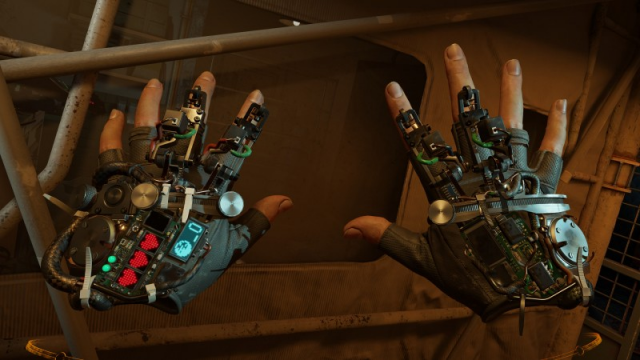
Possible Improvements
In Half-Life: Alyx, although there are three ways to move: “Teleport”, “Flash” and “Keep Sliding”. The first-person movement still can’t be as immersive as the visuals. Unfortunately, high-end devices such as wearable positioners, vests, gloves, and gimbal treadmills have low adoption. It is hoped that in the future, more inexpensive and applicable hardware devices will emerge to support immersive experiences of virtual reality technology.
Although there is a problem with how to move in first-person VR, we can still consider choosing third-person or reducing or even not moving in first-person, such as The Lab, Beat Saber, and SuperHot VR.
Conclusion
Half-Life: Alyx received acclaim for its graphics, voice acting, narrative, and atmosphere, and has been cited as VR’s first killer app. It was nominated for numerous awards and won “Best VR/AR” at the 2020 Game Awards. It is a successful epoch-making VR game that I greatly enjoy playing Half-Life:Alyx and had a wonderful experience in the virtual world!
Reference
https://store.steampowered.com/app/546560/HalfLife_Alyx/
https://en.wikipedia.org/wiki/Half-Life:_Alyx
https://uploadvr.com/half-life-alyx-locomotion/
https://www.roadtovr.com/half-life-alyx-trailer-views-mainstream-gaming-spotlight/





